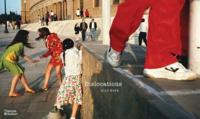Publisher's Synopsis
Few artists spanned the movements of early-20th-century art as completely as did Hans Richter. Richter was a significant force in the developments of expressionsim, Dada, de Stijl, constructivism, and Surrealism, and the creator, with Viking Eggeling, of the abstract cinema. Along with Theo van Doesburg, Lazlo Moholy Nagy, El Lissitsky, and a few others, he is one of the artists crucial to an understanding of the role of the arts in the reconstruction era following World War I. After his emigration to the United States in 1941, he contributed enormously to modernism in the United States and served as an important conduit between the American and European art communities.;Most American scholars have focused on Richter's film work and have favoured a strictly formalist approach that separates art and politics. The contributors to this development of the early-20th-century avant-garde and his political activsm. When Richter's work, particularly that of his earlier, European career, is viewed in its historical and political context, he emerges as an artist committed to the power of art to change the fabric of social, political and cultural affairs.;The essays in this book, which accompanies a 1998 Richter retrospective held in Valencia, Spain, and at the University of Iowa Art Museum, are organized roughly around the expressionist and Dada years, Richter's short tenure in Munich's postwar revolutionary Second Council Republic, his central involvement in international constructivsm and the development of the abstract cinema, and the politicization of film that arose from his anti-Nazi activities of the late '20s and '30s.












